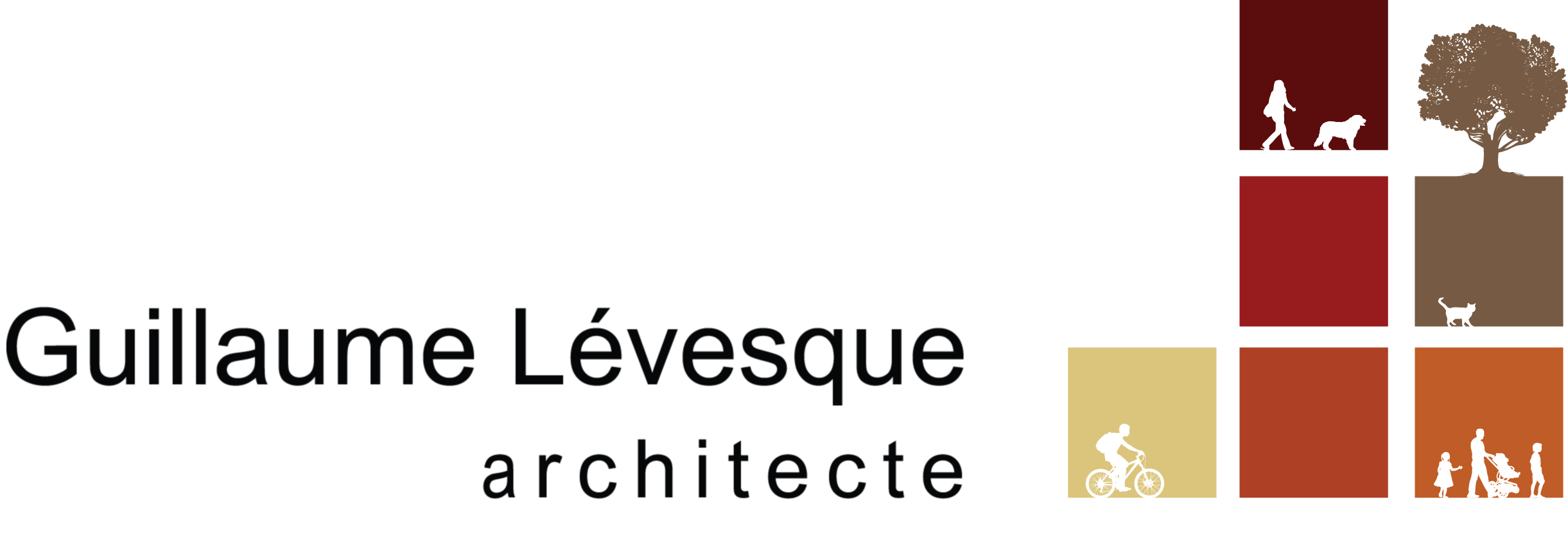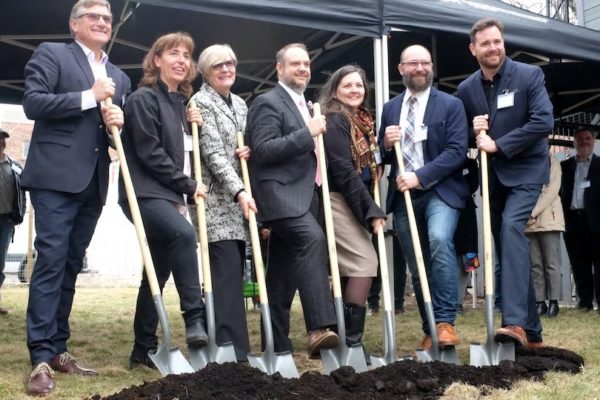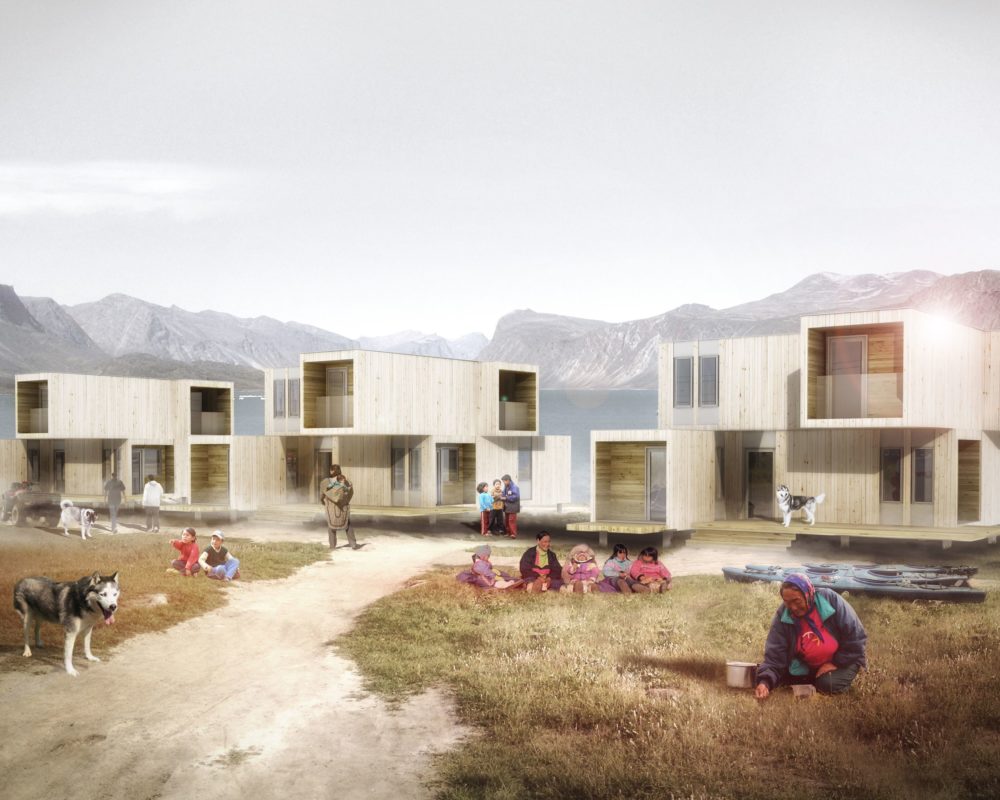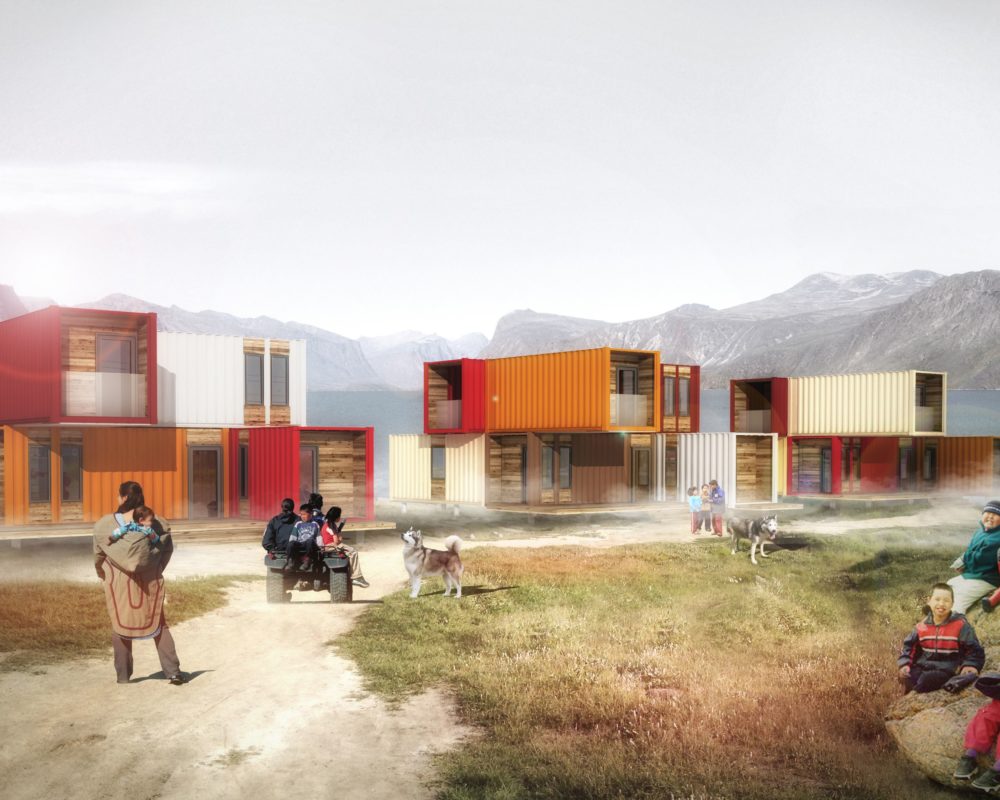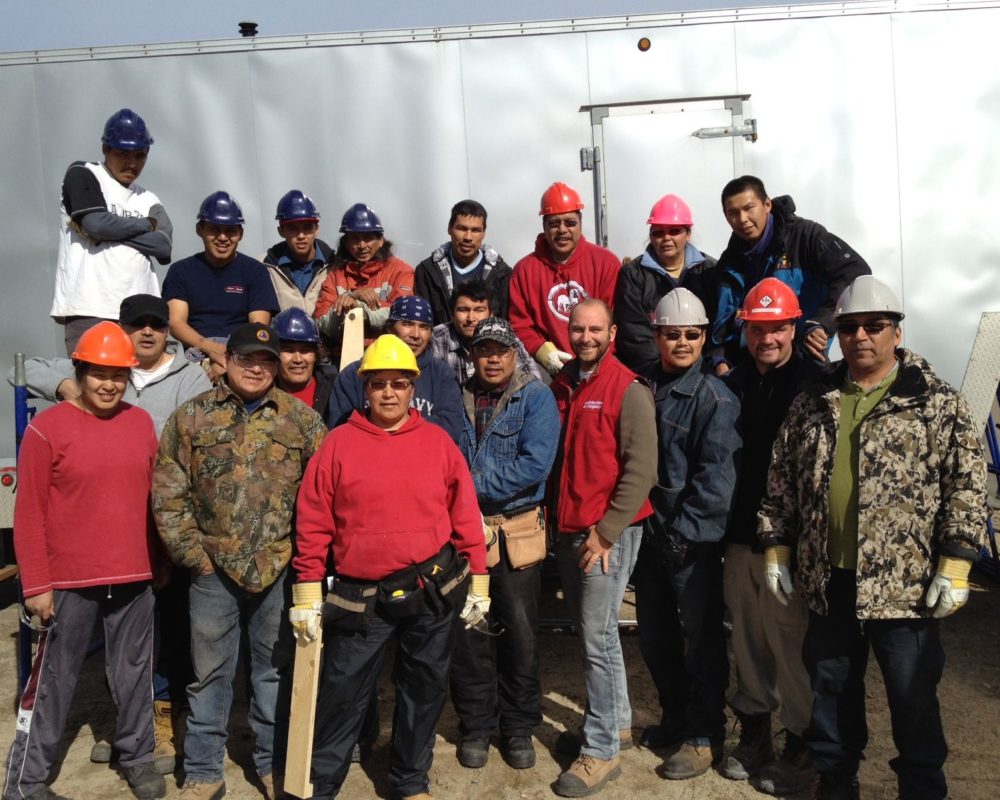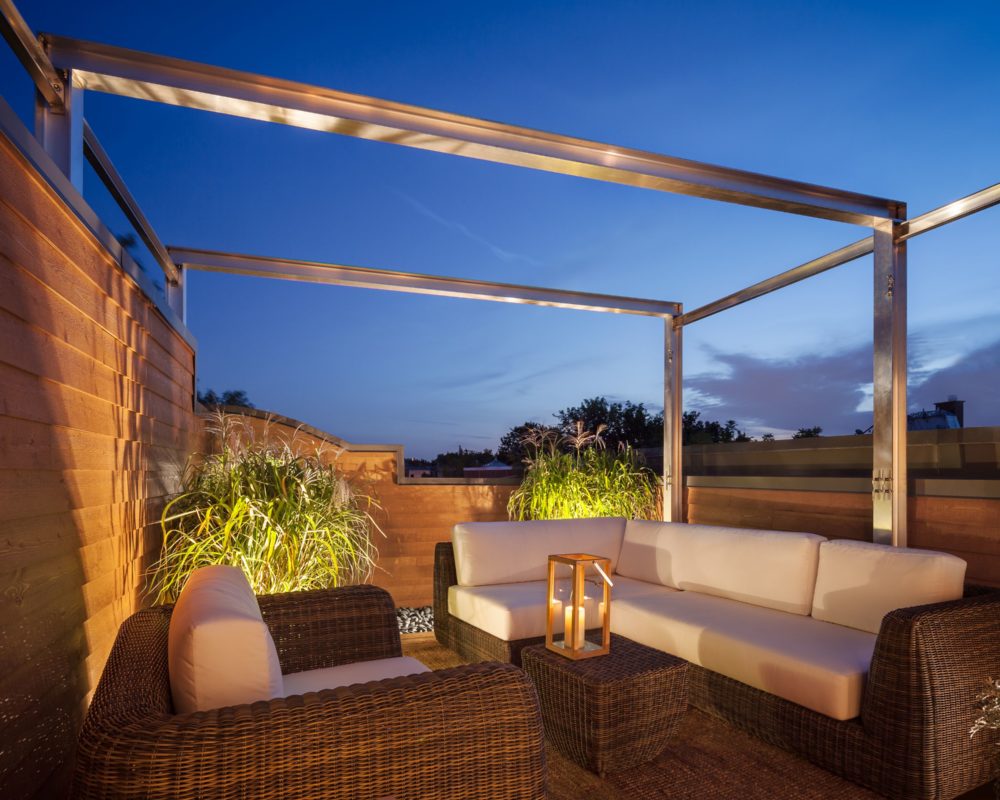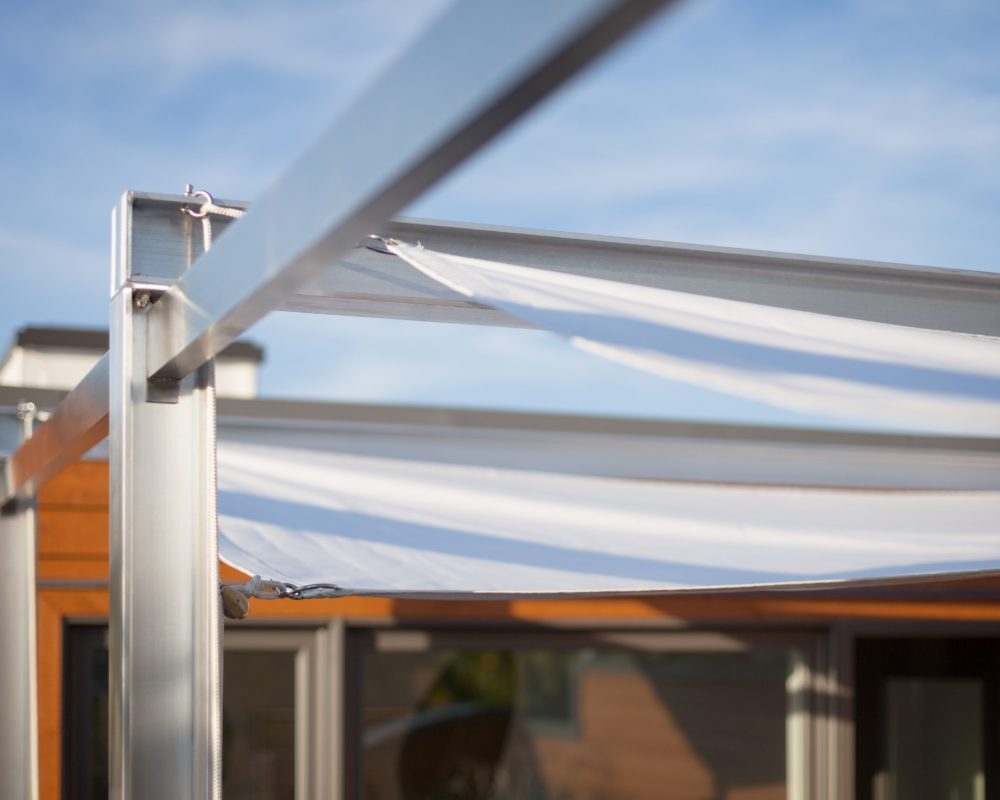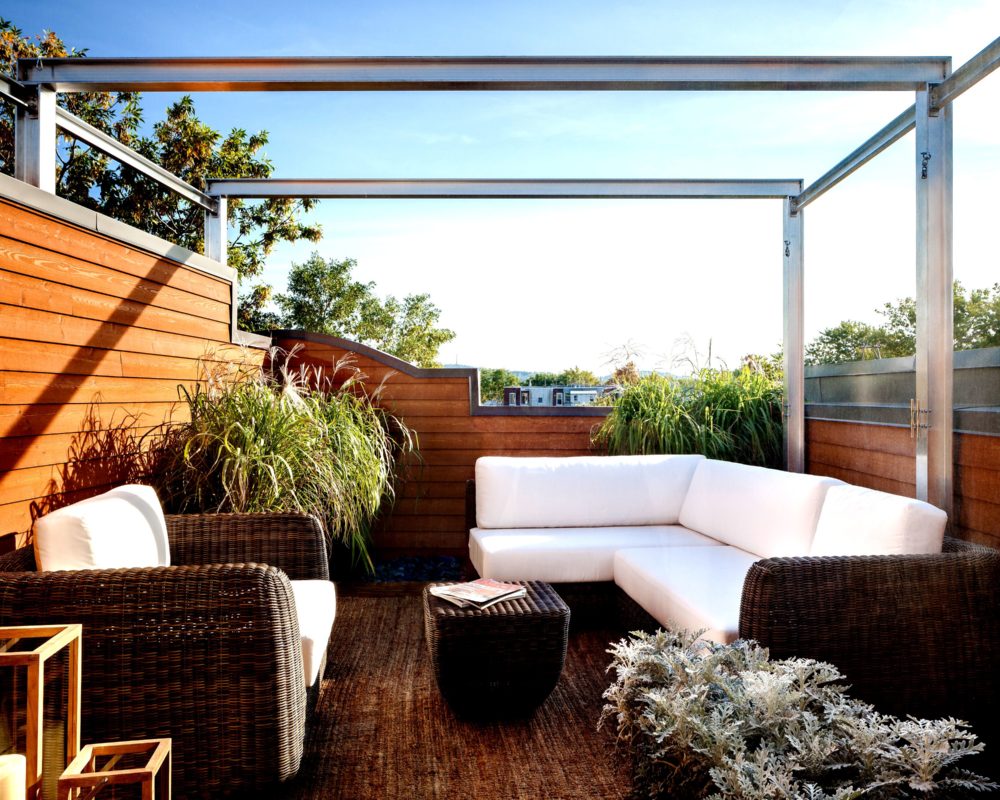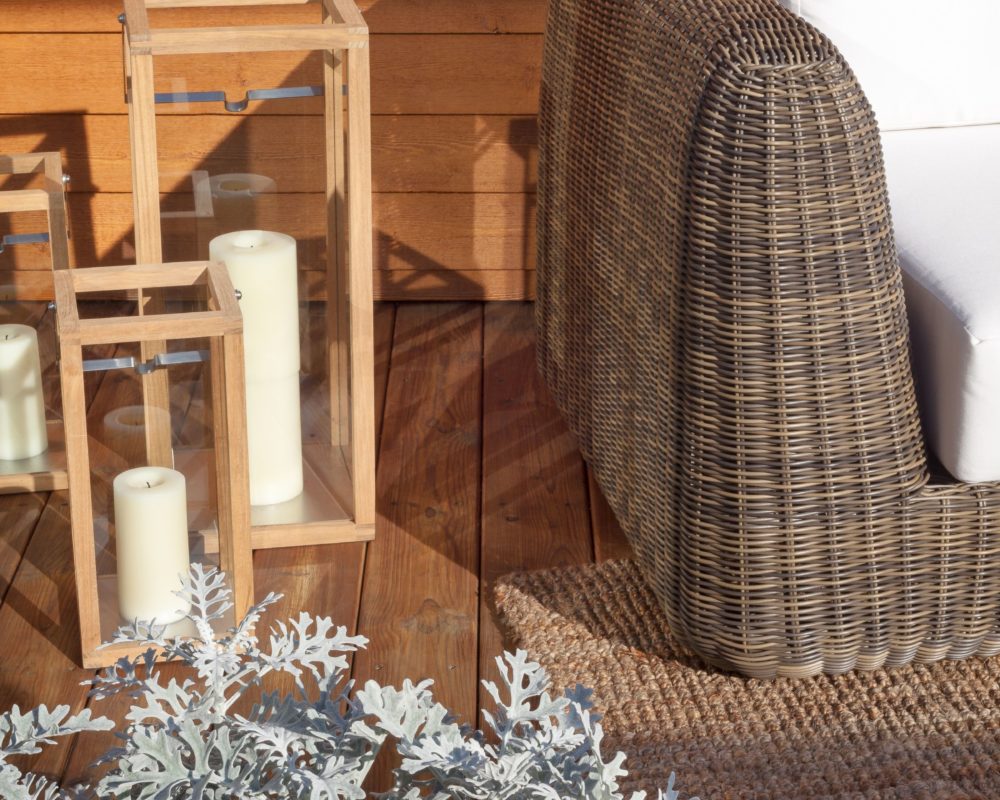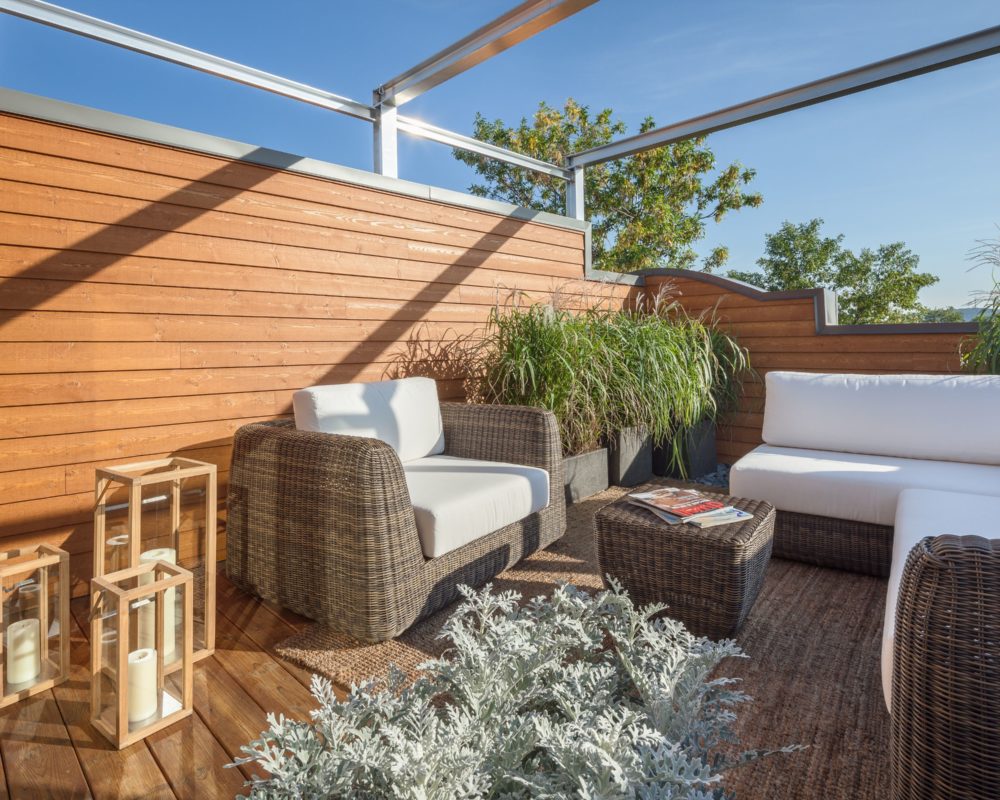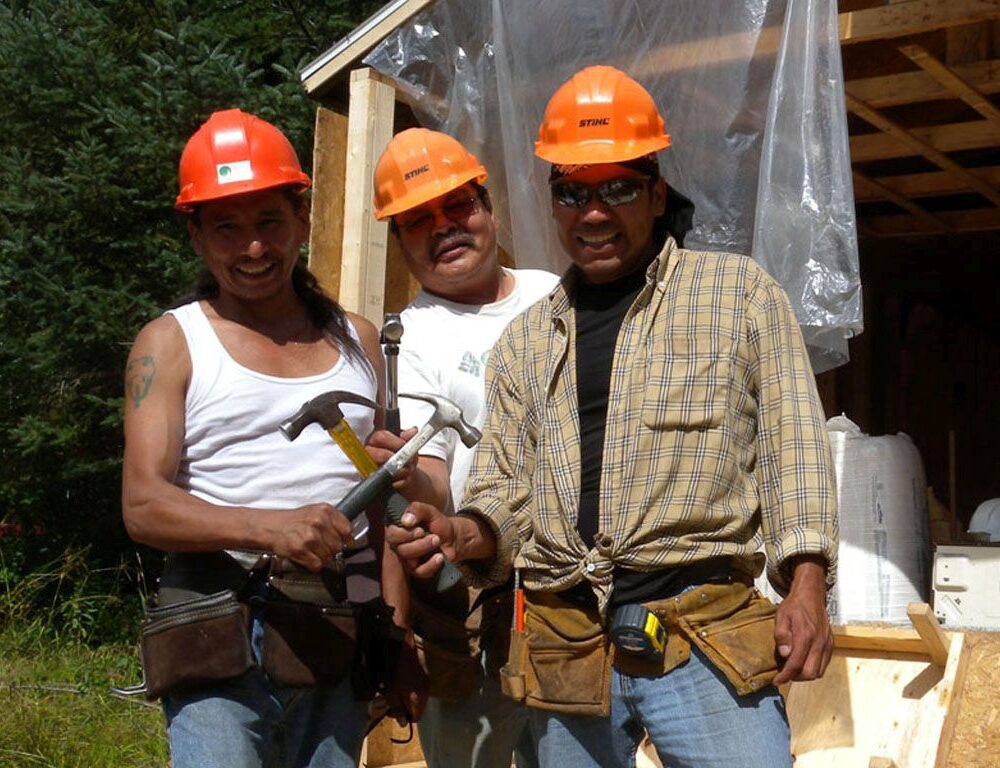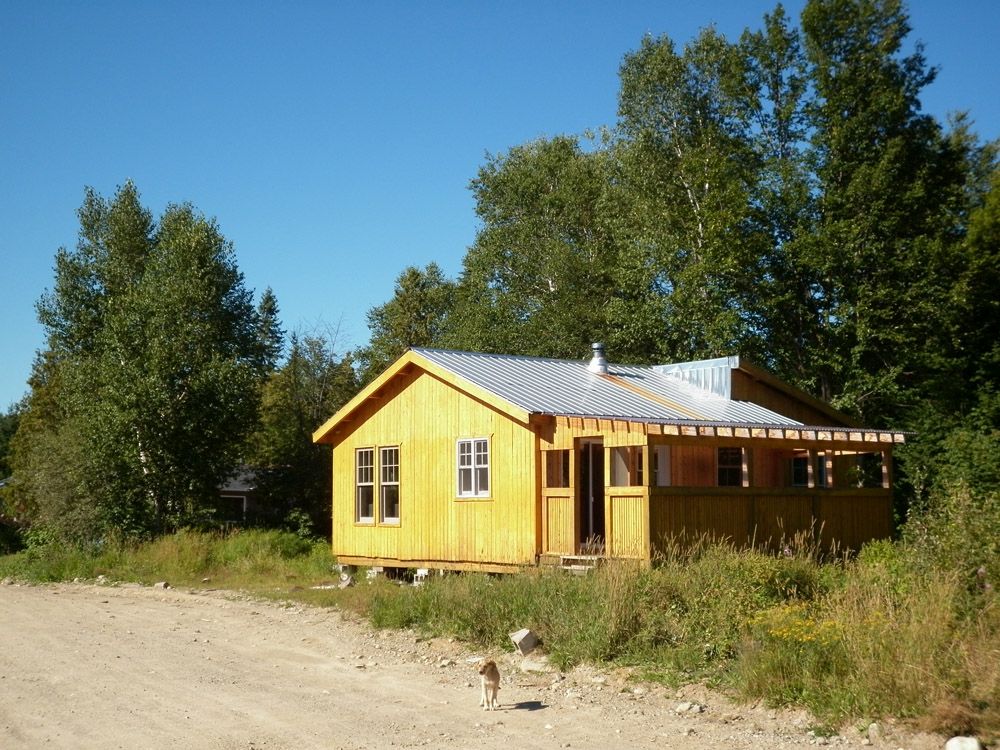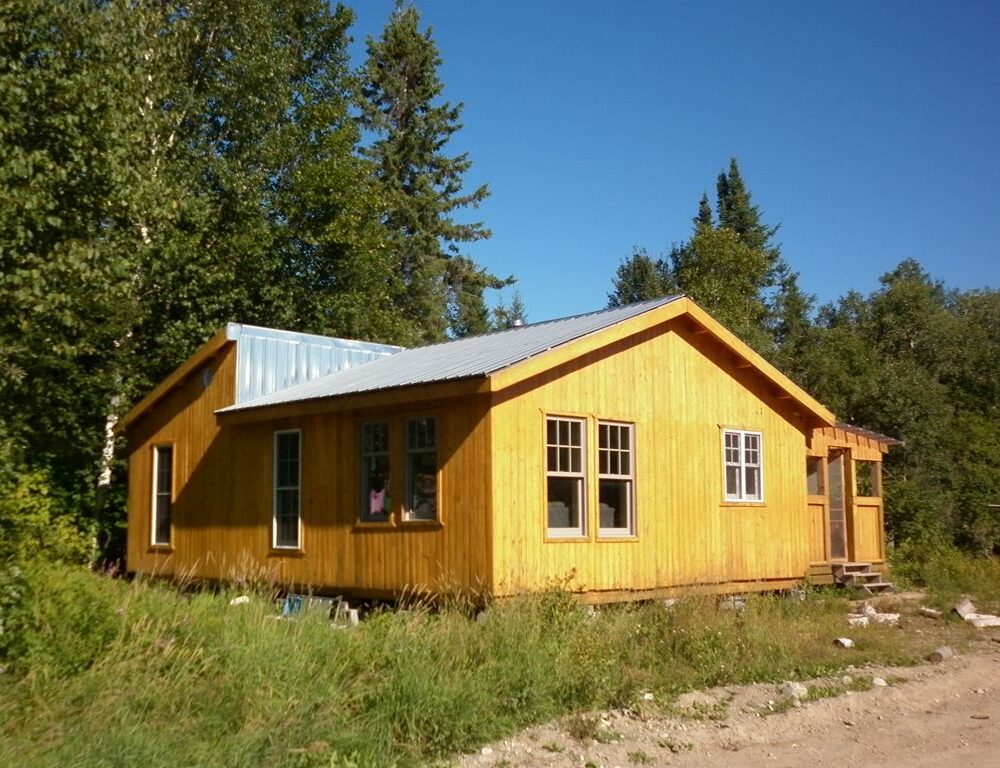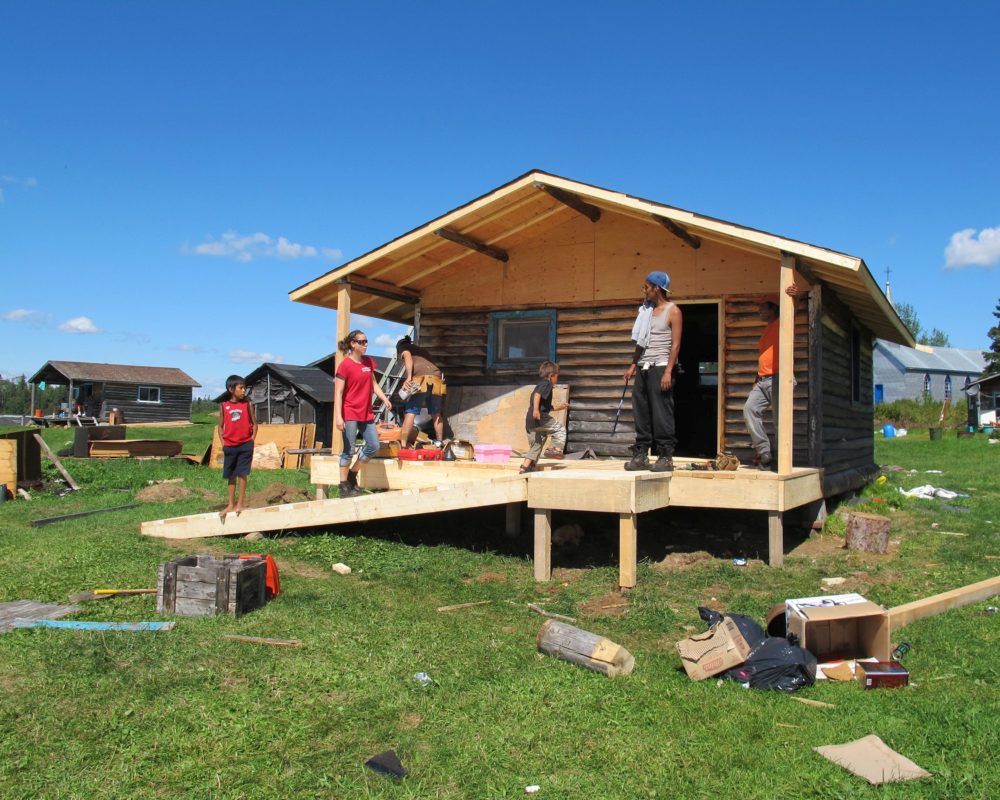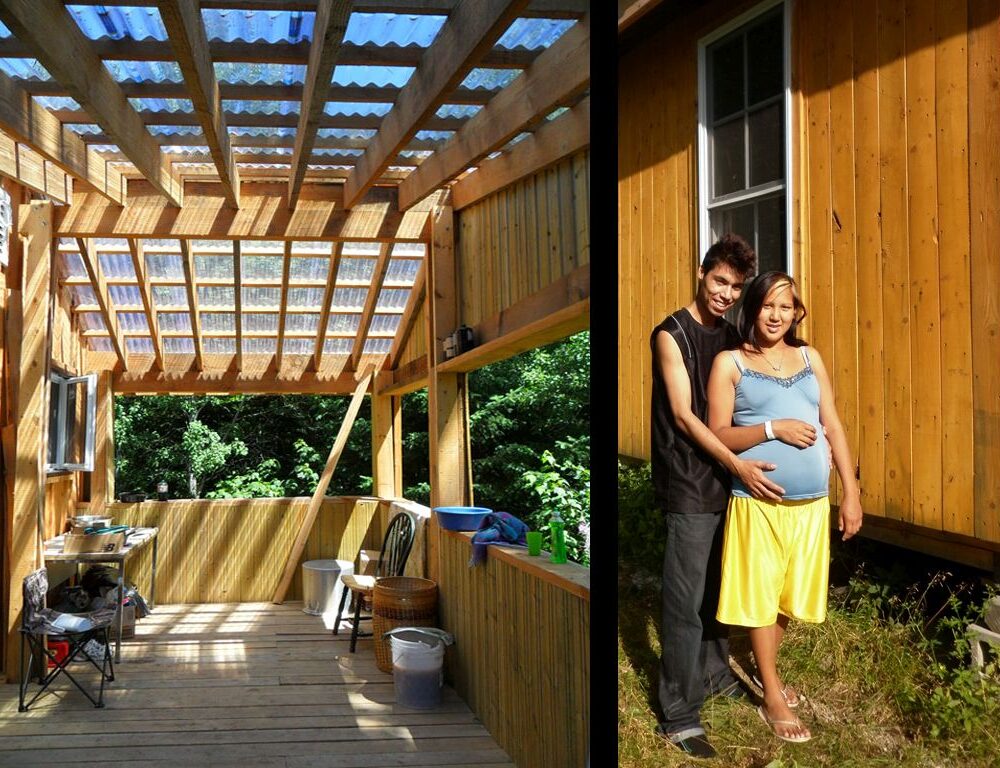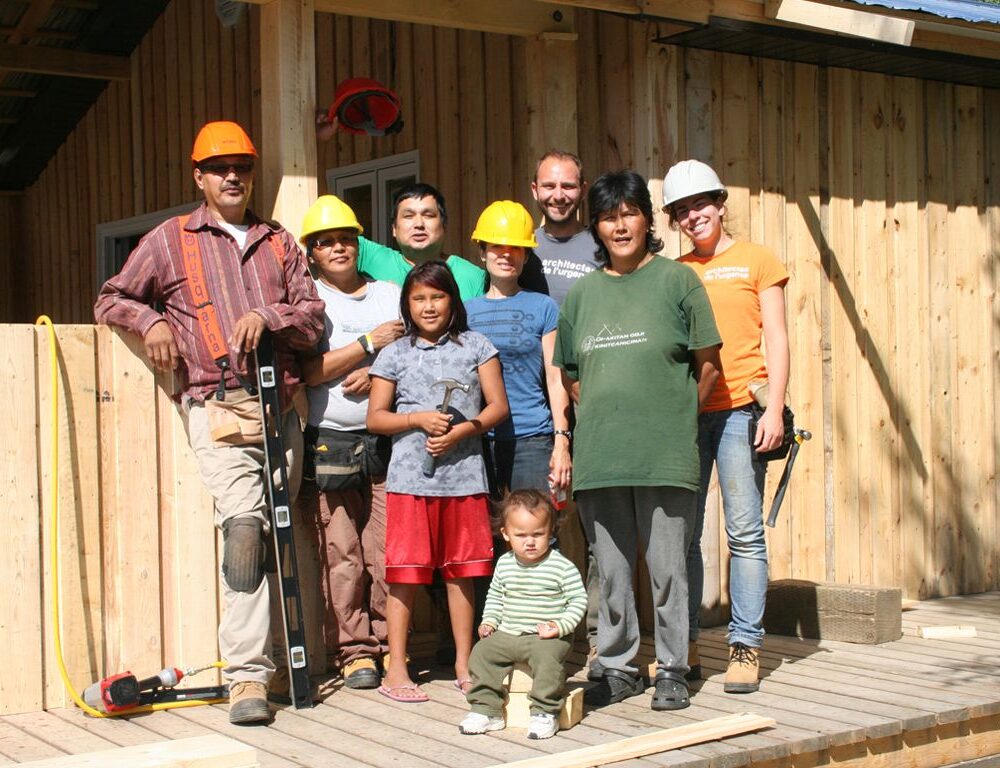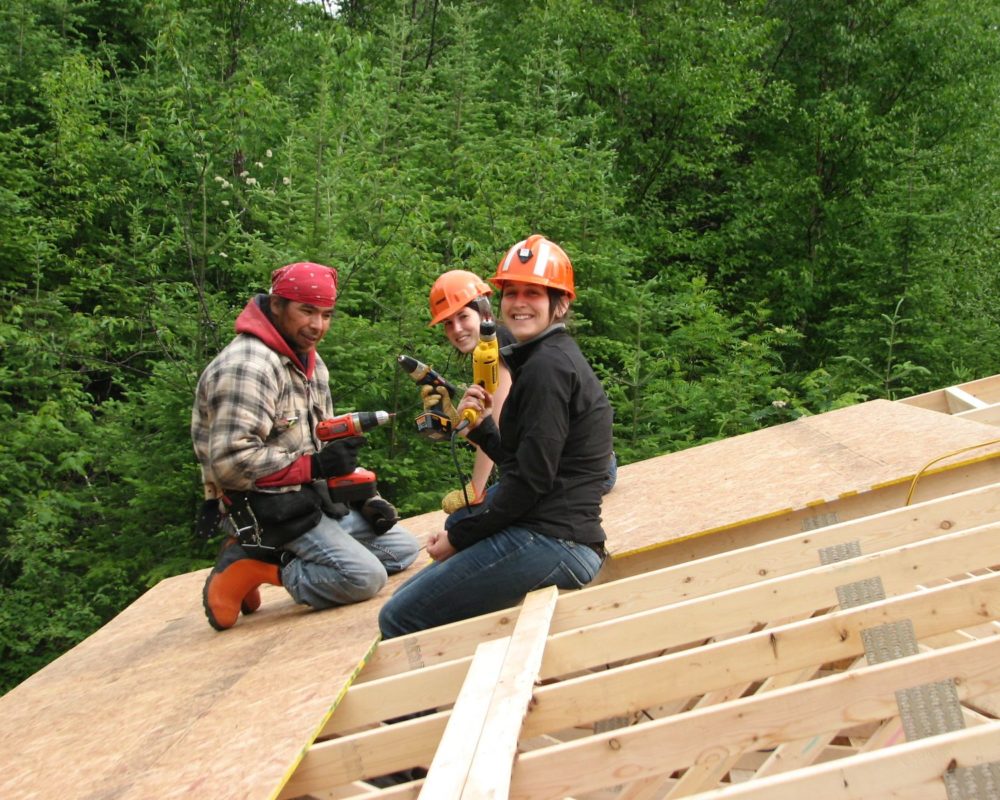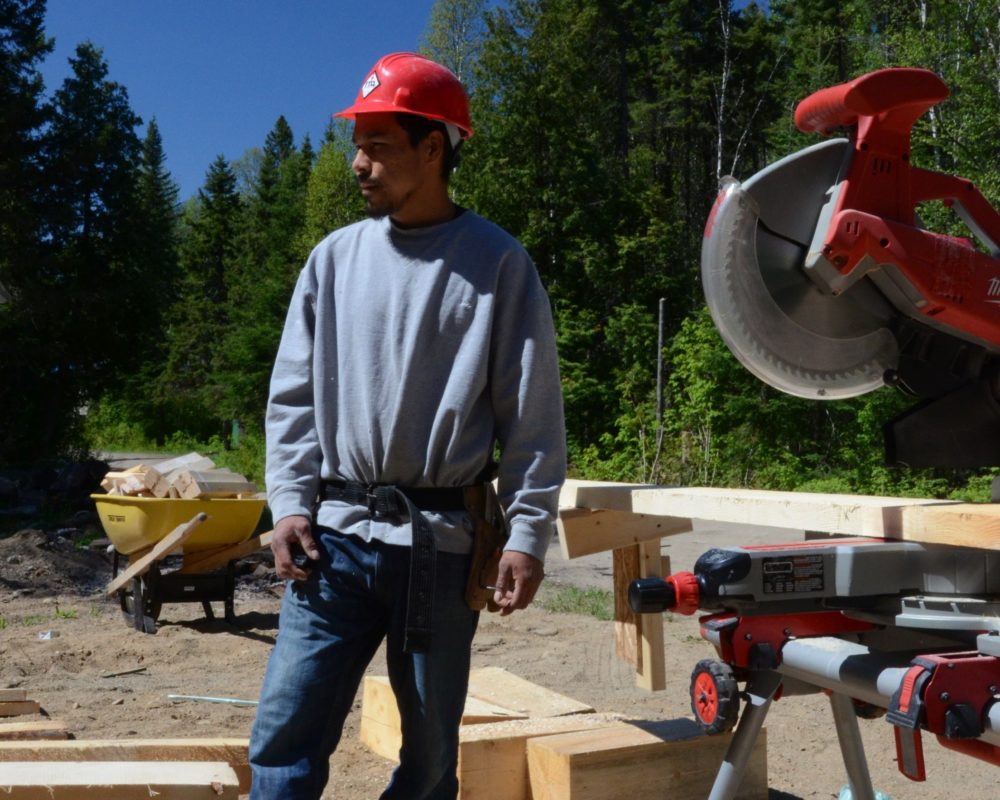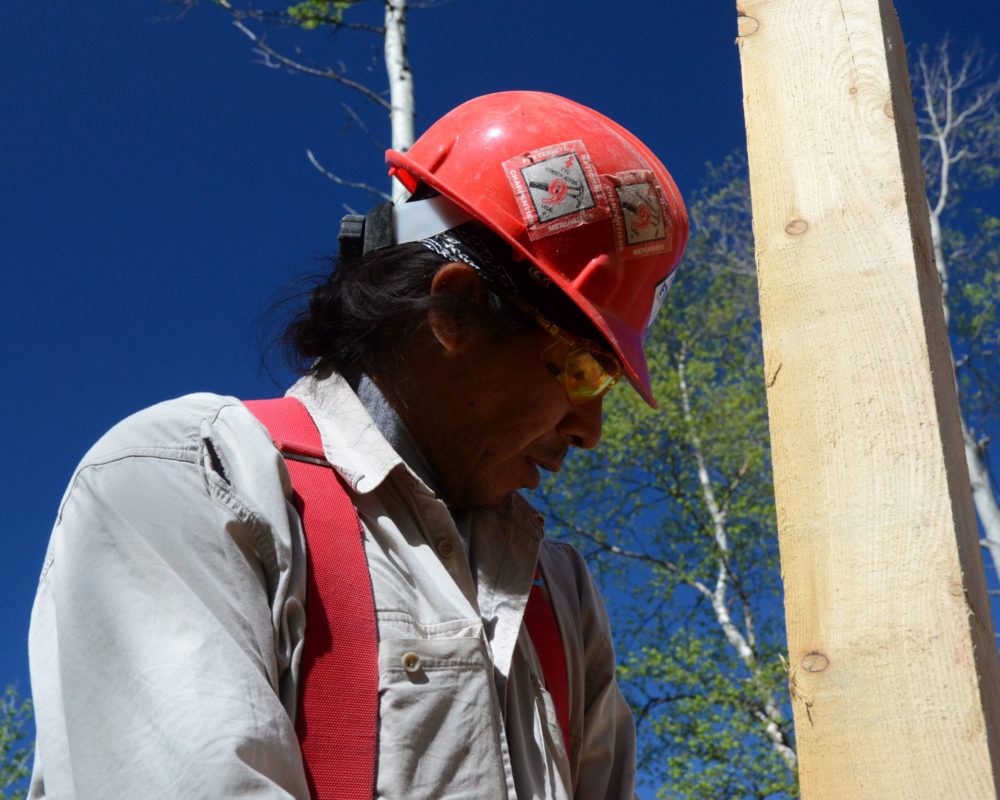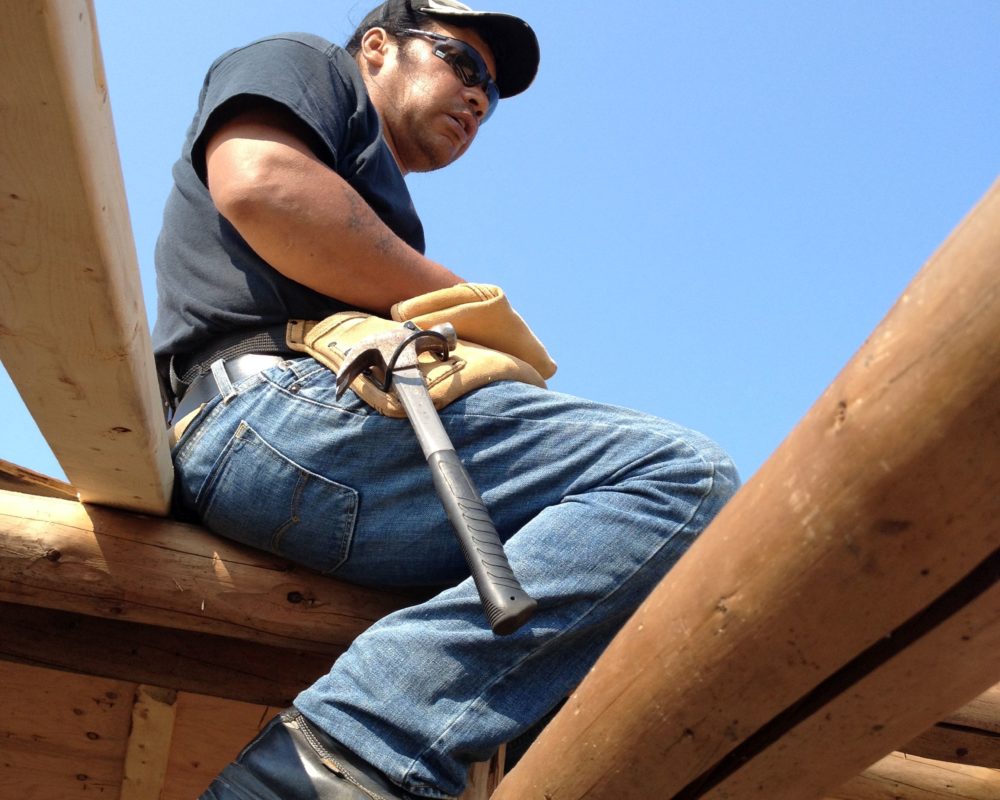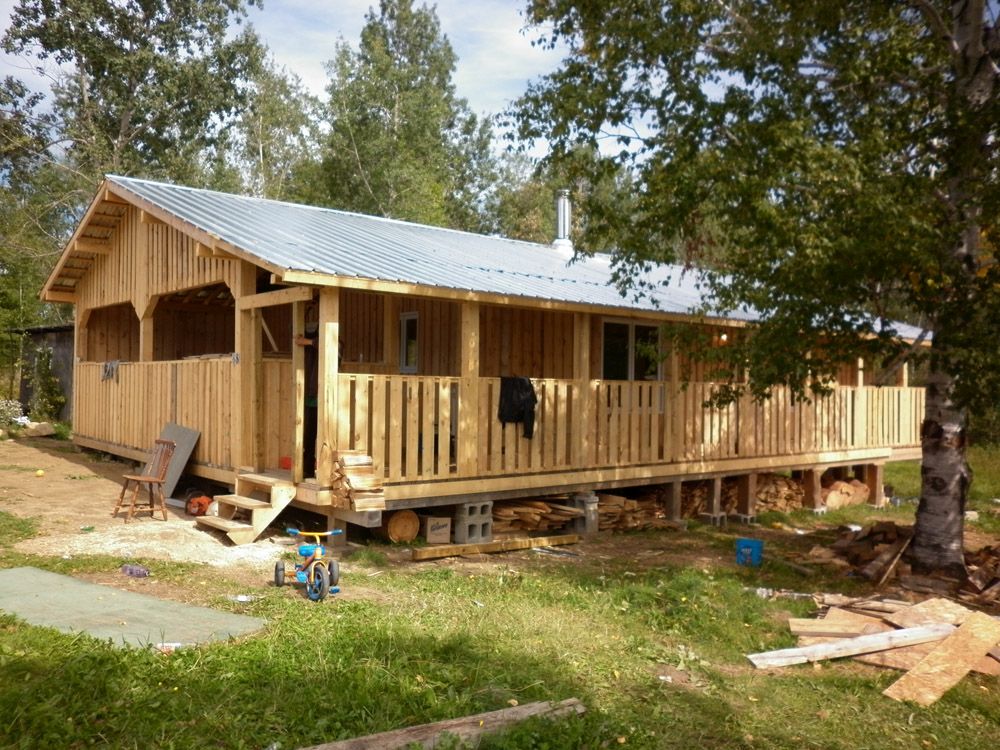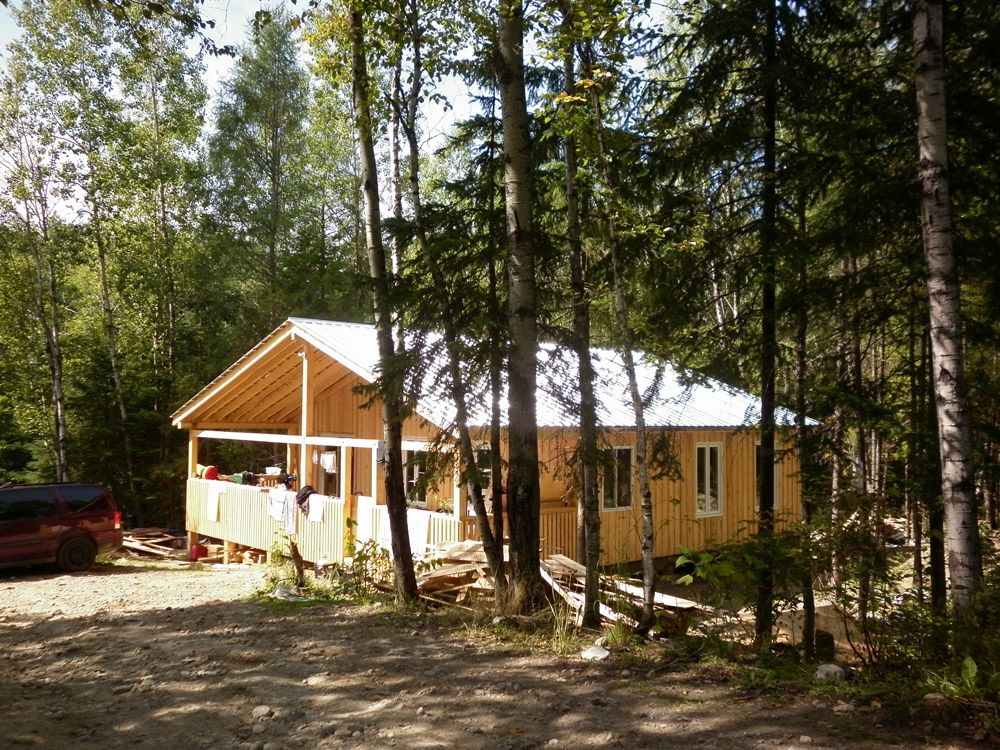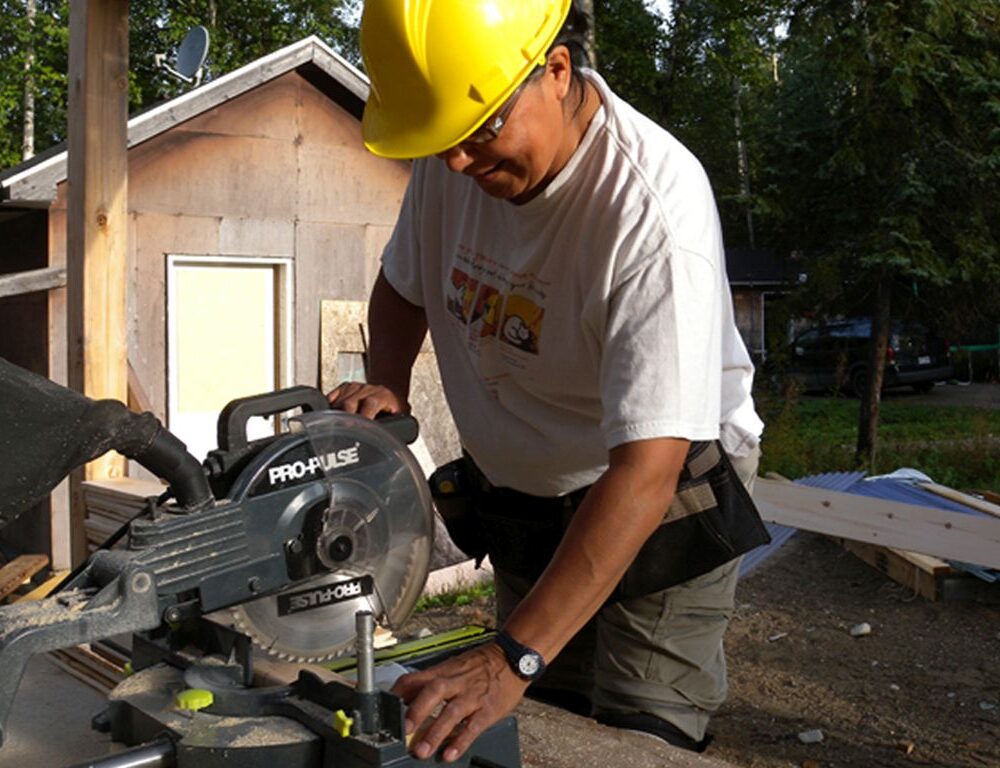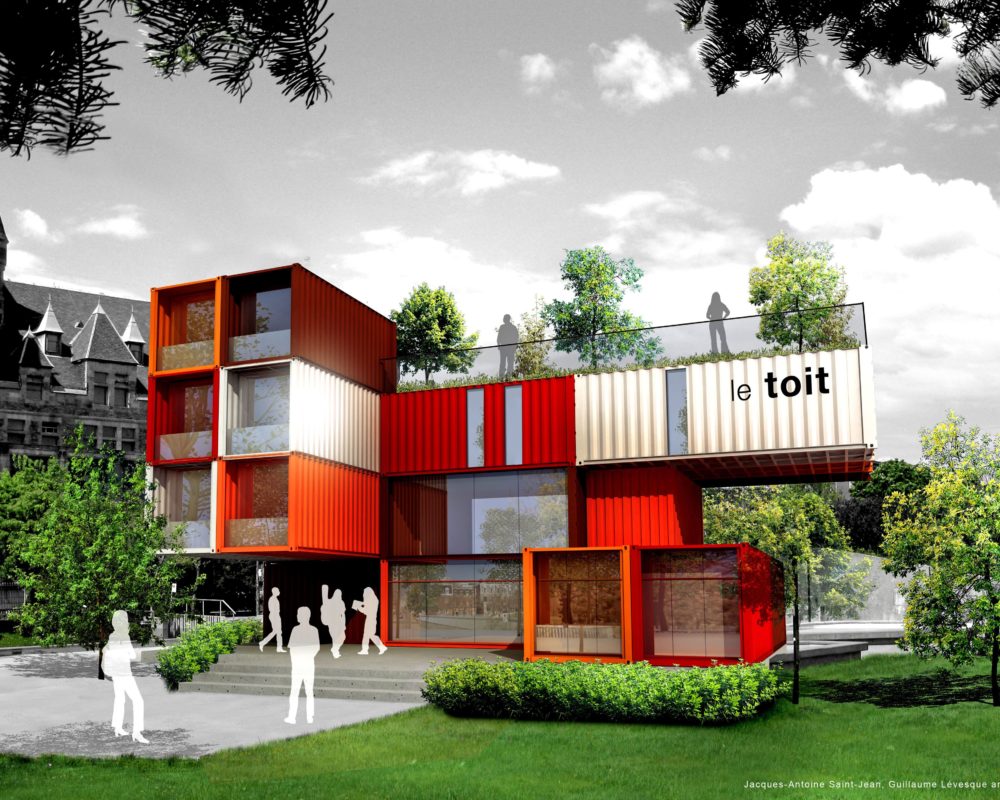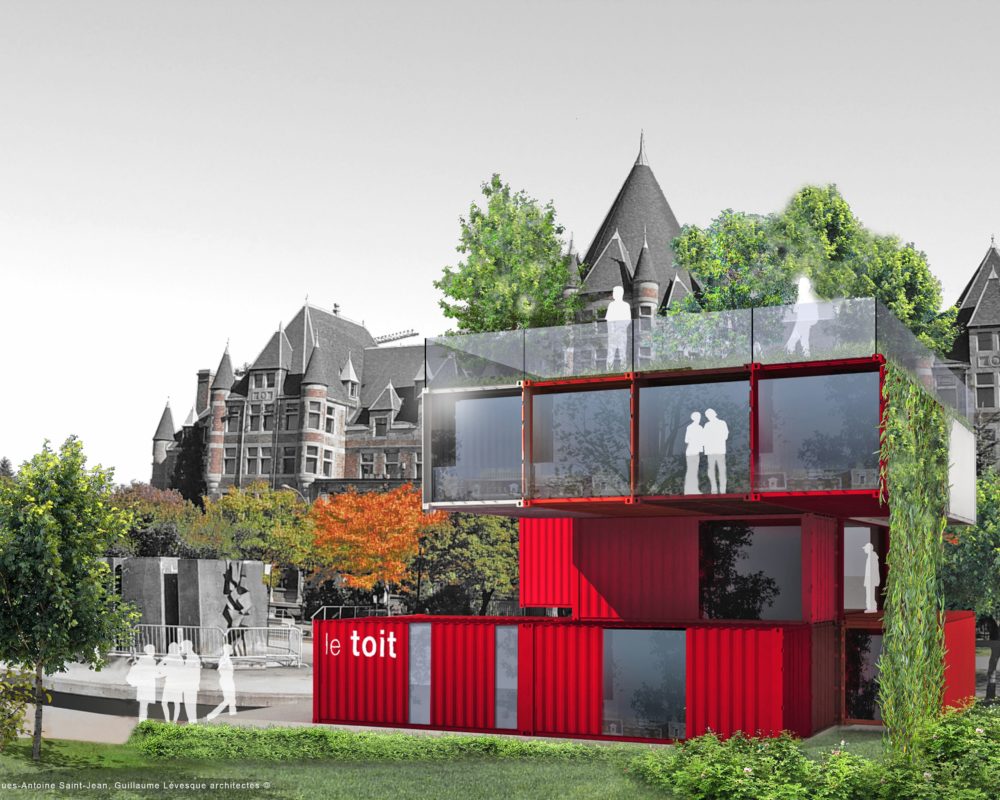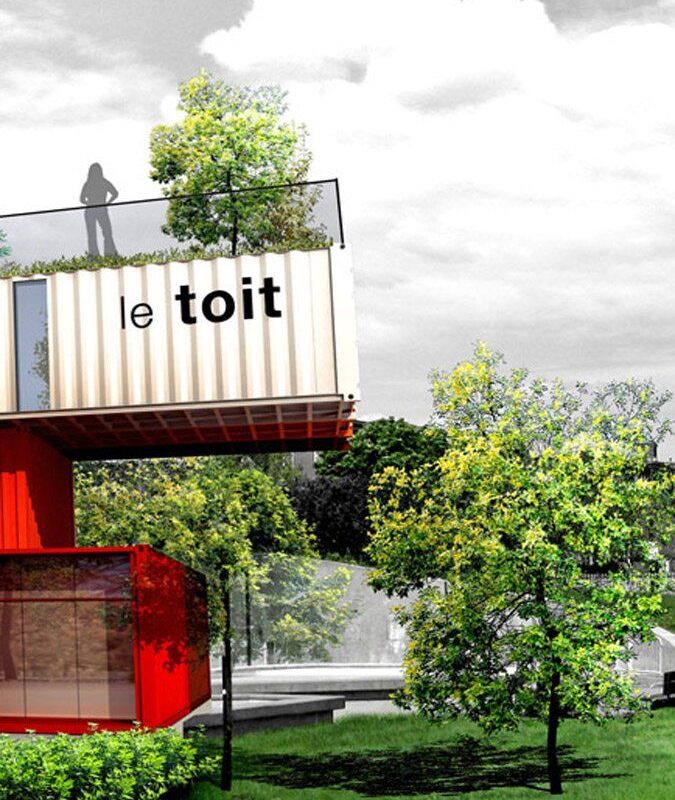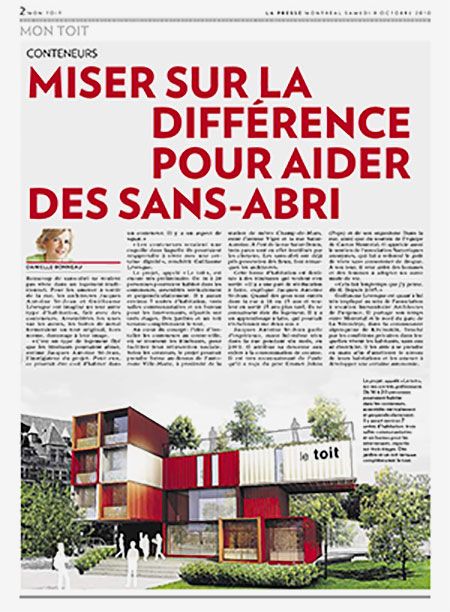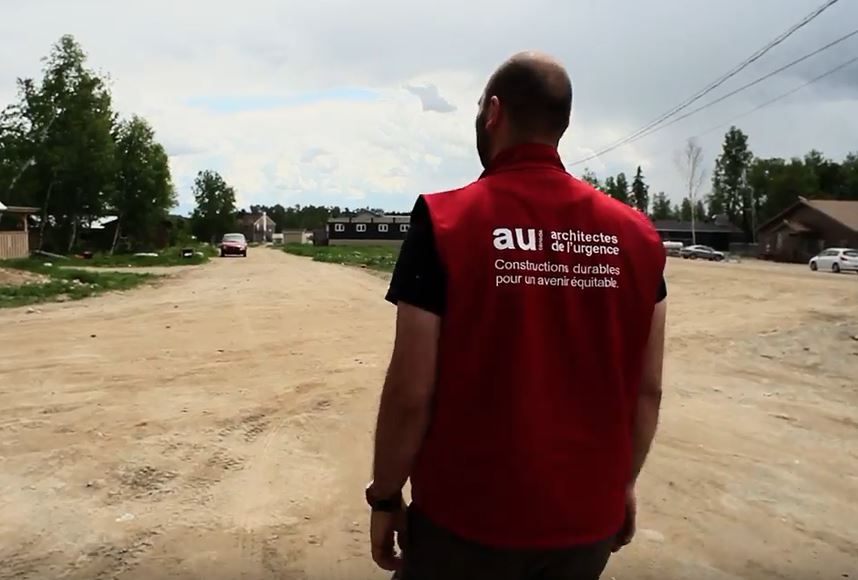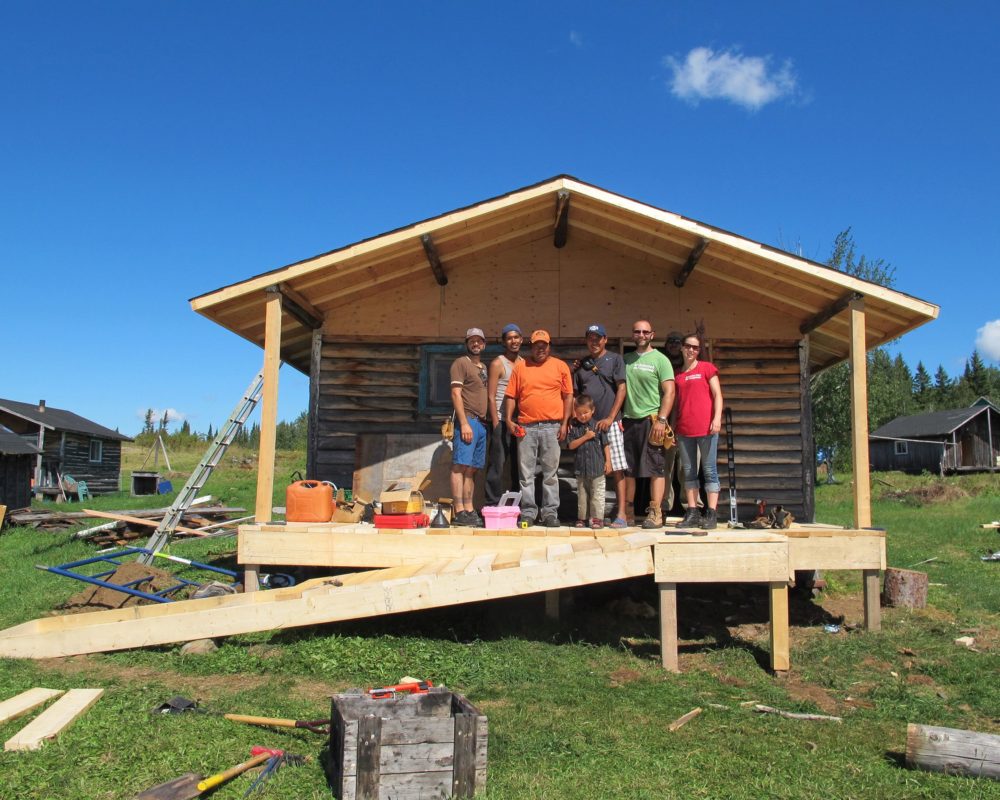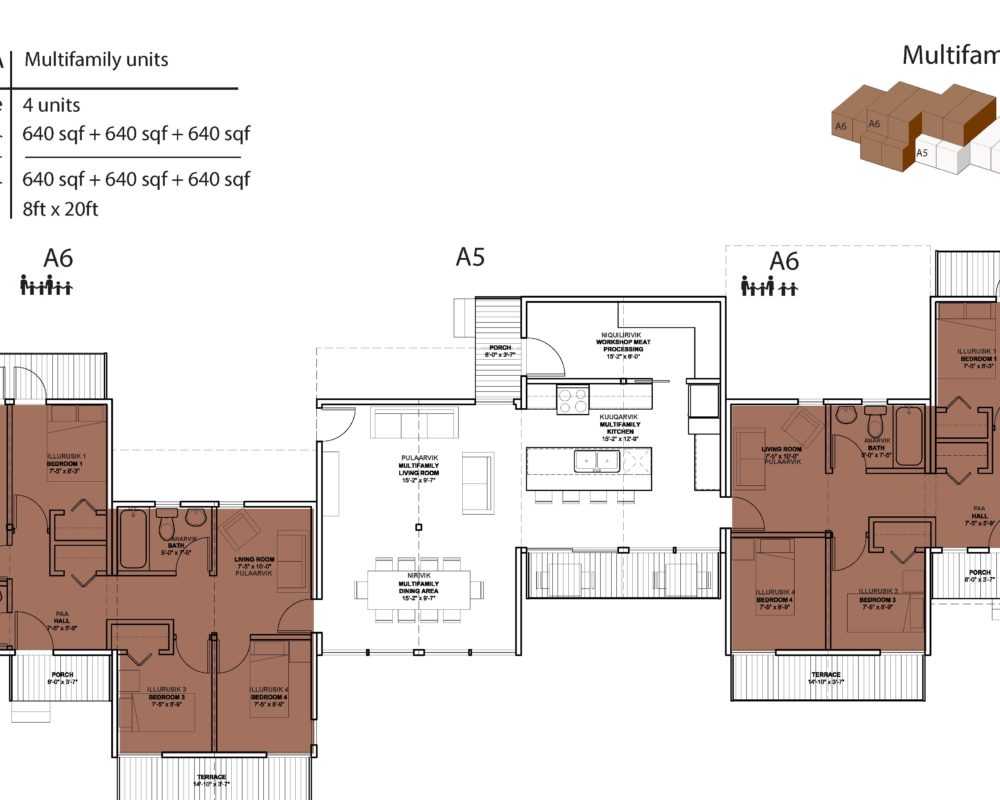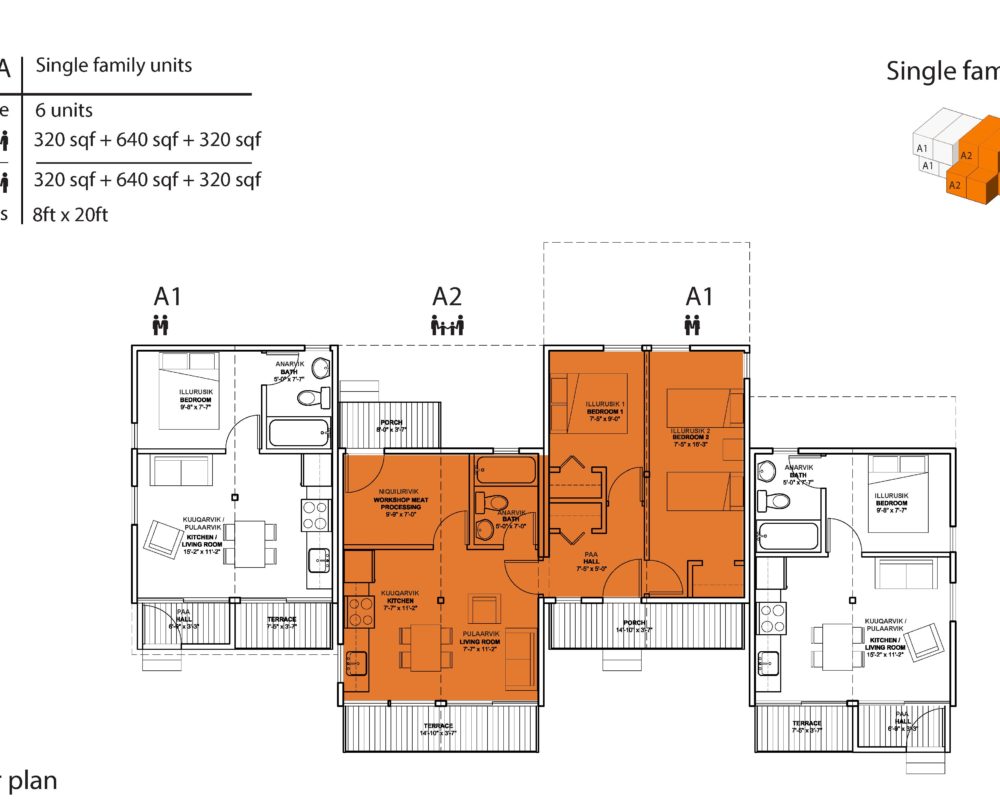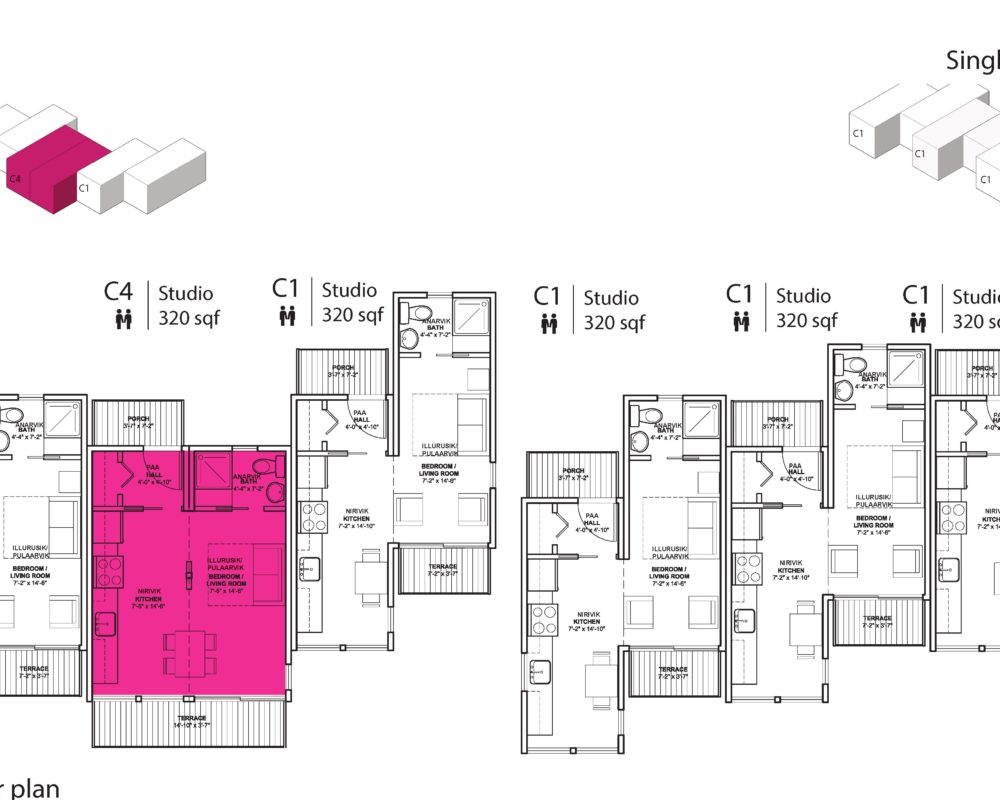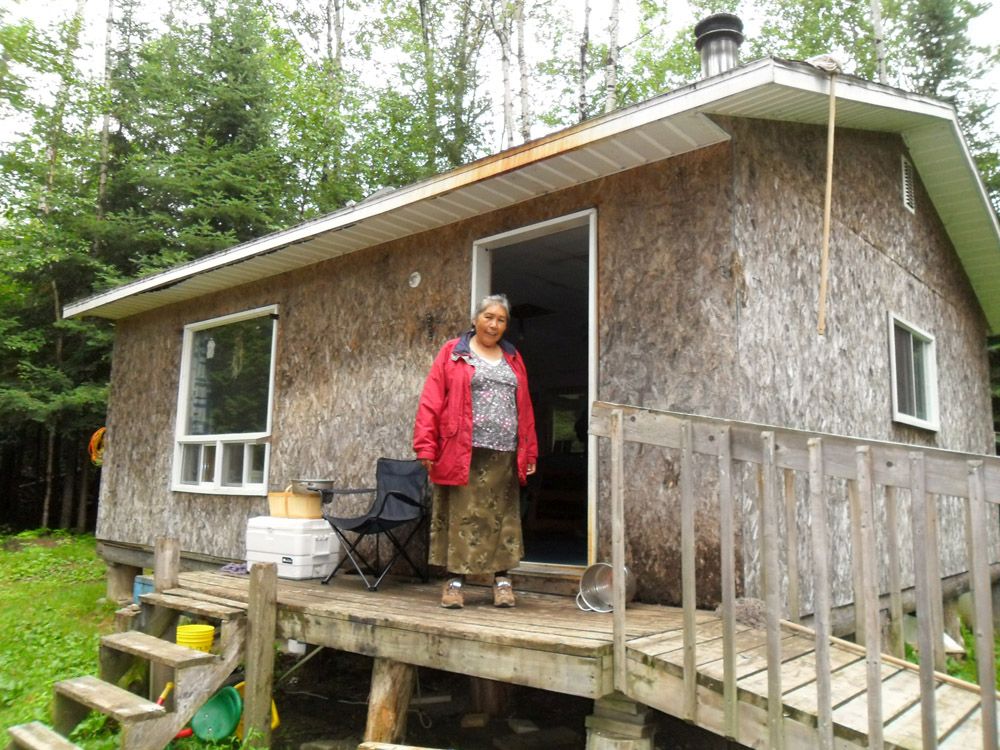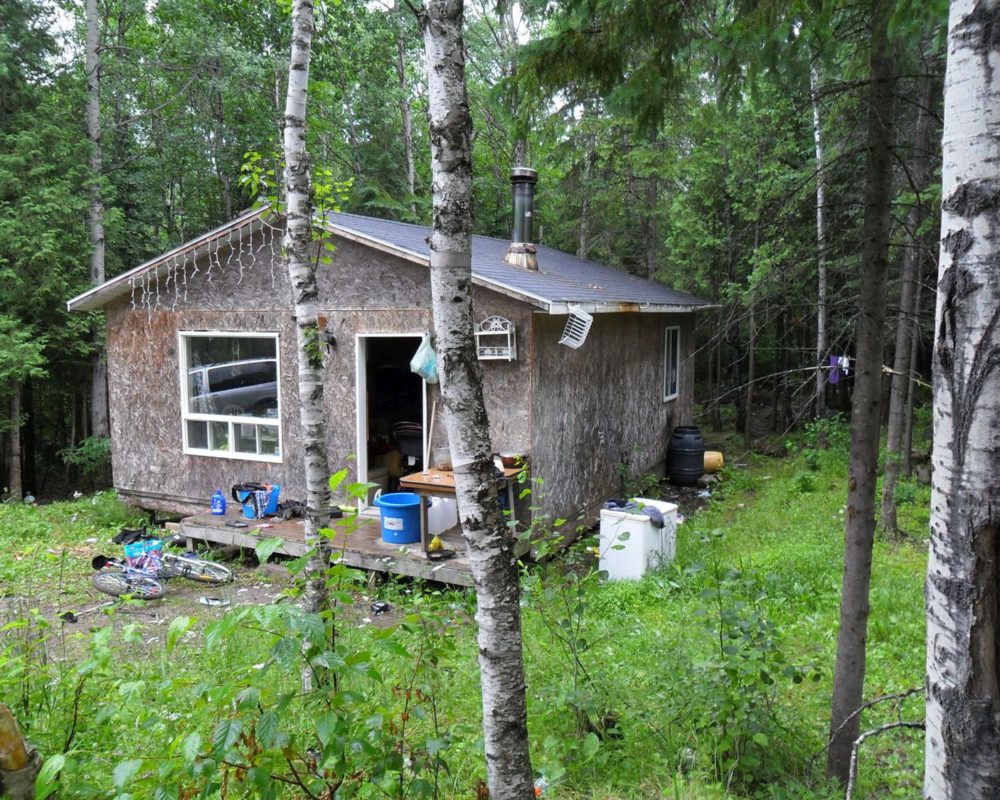Here are three posts in Le Soleil on Saturday, November 14, 2015, on Aboriginal housing and various initiatives to promote self-reliance, self-sufficiency and social and economic development within Aboriginal communities.
Involvement of families and volunteering
It seems very important to include Aboriginal families from the outset in the design and construction process to meet their cultural needs and foster a sense of belonging, not to give them a new or renovated home without they had a say. On the Kitcisakik shipyards, carpenters Anishnabek have had the help of many university volunteers to create links and enrich the dialogue between aboriginal and non-native people while breaking down prejudices.
Aboriginal Empowerment
I feel in the midst of a real momentum to improve things and break down prejudices. I believe that a real Aboriginal empowerment will go through the young and the next generations that will have to be included in our social project. This will be possible when we invest in services to the population, improving access to education and supporting social, cultural and economic projects that will emerge within communities, in response to needs. that they themselves will have determined.
Response to cultural needs and energy self-sufficiency
These collective dwellings made of containers can take different configurations, to allow to create private spaces, but also common spaces to answer the cultural needs of the Inuit, such as stays, kitchens, dining rooms developed at ground level and workshops of processing of fish and meat. At the request of families, skylights and outdoor terraces will also be developed.
The square foot is very expensive to build and heat in these northern countries. Of the 14 northern villages in Quebec and 39 in the rest of Canada, the majority are powered by large oil generators. It is imperative to build in a sustainable manner to limit energy consumption while developing wind energy self-sufficiency projects while building a connection to the provincial hydro grid. In the 21st century, the social, environmental and economic cost of continuing to supply electricity solely through oil is not sustainable in the medium term, especially since we are fortunate in Quebec and Canada to have access to at one of the cheapest energies in the world. Why not make it accessible to everyone?
Sustainable construction, financing and examples of Scandinavian architecture
We can not turn a blind eye to the underfunding of buildings and homes in aboriginal communities. That’s what happened in the 60s-70s-80s. We should rather build for the next 60 to 75 years and not for the next 20 years. We should take the example of Scandinavian architecture and sustainable buildings designed for the harsh climates of Norway, Sweden and Finland and cities like Nuuk and Sisimiut in Greenland. IThere are glaring multi-billion dollar housing needs across Canada. Of the 600 or so indigenous villages, more than two-thirds have serious problems of overpopulation as many homes will need to be renovated or rebuilt.
Guillaume Lévesque, architect

Habitat for Humanity is a non-profit organization that works around the world to build affordable housing and promotes the purchase of housing as a way to end the cycle of poverty. His actions are supported by many volunteers and the communities in which the organization is involved.
Habitat for Humanity’s vision is a world where everyone has the right to safe, affordable and decent housing. The organization works to ensure that this fundamental right is accessible to all.
Habitat for Humanity believes in the worth and dignity of every human being. The organization is respectful of the people it serves and those who contribute to the organization’s mission. Humans are the most valuable resource of the organization.
++++++++++++++++++++++++++++++
It is my pleasure to share one of our latest duplex projects in the Saint-Henri neighborhood in Montreal. Habitat for Humanity initiated the project and we volunteered for the organization and the family owner.
Here are links to the organization and the inauguration of the project recently published in various articles of the Press and Huffingtonpost.ca
Documentary Film, 2013, Jean Nicholas Orhon www.f3msurrequest.ca/bidonville-film
The documentary Bidonville: Architectures of the Future City proposes a reflection on the problem of housing in the era of overpopulation of cities by revealing a sociological and philosophical point of view on constructions on a human scale. Filmmaker Jean-Nicolas Orhon immerses us in the privacy of citizens and families who, through their resilience and ingenuity, have built homes adapted to their needs, often drawing inspiration from the architectural traditions of their home communities .
The film is a human and aesthetic journey across continents: in Mumbai, India, in the largest slum in Asia; in Rabat in Morocco on former farmland; in Lakewood, New Jersey in a tent city; in Marseille, France, in a caravan area; and in Kitcisakik, Quebec, in a Native American community.
Post on the involvement of a young architect for the project with the indigenous people of Kitcisakik and AUC.
How an architect helped the Algonquin, Janet Bagnall, May 18, 2012
Post on the involvement of a young architect for the project with the indigenous people of Kitcisakik and AUC.
Interview of Monday, November 22, 2010 on the project The Roof
Summary of the issue of November 22, 2010 →
Article in the Press:
Project Interview with Kitcisakik Aboriginals and Emergency Architects of Canada
Read the article on lapresse.ca →
I can not wait to have a roof to myself
RTVC, Russian-Canadian Television Interview on the Le Toit project, November 2010
Newspaper Urbanité, Spring edition 2009 Kitcisakik, the invisible village
Newspaper Voir, Thursday, July 9, 2009 Humanitarian Architecture
